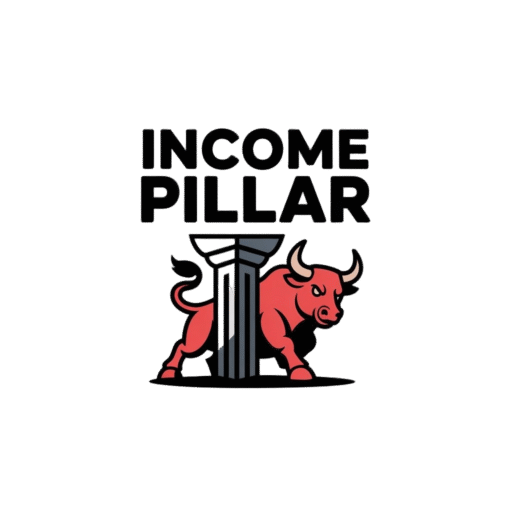Introduction
If you want to grow your online business, offering digital products is a smart choice. Digital products are items you can sell that are delivered electronically, like ebooks, courses, or software. They come with many benefits such as low costs and easy delivery.
This article helps you discover useful digital product ideas for your business. You’ll learn about popular options and how to pick the best one for your audience. Use these insights to create or expand your digital offerings and reach more customers effectively.
Digital Products Ideas
When thinking about digital products, you might first picture ebooks or online courses, but there’s actually a wider range to explore. For example, printables—like planners or art prints—are popular because they’re easy to create and people love instant access to useful or decorative items. Then there are mobile apps, which can solve specific problems or entertain users, appealing to a tech-savvy crowd. Even things like music tracks or stock photos can be digital goods if you have the right audience.
Who buys these? Well, it depends. Entrepreneurs often go for courses that teach new skills, while creative types might look for templates or design assets to speed up their work. Parents could be drawn to printable educational materials for kids, whereas fitness enthusiasts might want workout plans delivered as PDFs or through apps. The key is matching your product to a niche need.
What’s tricky is figuring out which digital product fits your strengths and your audience best. Should you invest time in creating a course or focus on simpler items like templates? Sometimes, starting small and seeing what your customers respond to works better than trying to guess the perfect idea right away.
Popular Digital Product Ideas
Digital products come in many forms, and some types seem to sell better than others. You might want to explore a few popular categories to see what fits your skills or interests.
Courses and Tutorials are among the favorites online. People love learning at their own pace, and you can teach almost anything—from cooking and photography to coding or personal finance. Platforms like Teachable, Udemy, or even your own website make it possible to reach a broad audience. When creating a course, focusing on clear steps and providing valuable resources usually helps. You’ll want to break content into manageable sections—think short videos paired with quizzes or downloadable guides. But sometimes, it’s tricky to find the right depth, so testing your material on friends or a small group can clarify what works.
Printable and Downloadable Files appeal to people who want quick, easy tools or decor. Planners, calendars, art prints, and worksheets are common examples. For instance, a busy parent might download a weekly meal planner, while a teacher looks for classroom activity sheets. These items sell well because buyers get instant access and can print them as needed. Plus, they often require less initial effort than complex courses, though designing something visually appealing matters a lot. Think about your own habits—have you ever grabbed a printable checklist or a coloring page? Those small conveniences can be a real draw for customers.
Other digital goods worth considering include mobile apps, templates for websites or resumes, music, or even fonts. Each attracts different users—someone looking to streamline business operations might buy a ready-made invoice template, while a graphic designer could be interested in new font styles. By focusing on what problems your product solves or how it adds value, you get closer to meeting real demands.
Finding Your Niche
Focusing on a niche can make your life a lot easier when creating digital products. You’re not trying to be everything to everyone—just one thing to a specific group. That means your marketing can be clearer, your product development more targeted, and your audience more engaged. But finding the right niche isn’t always straightforward.
Start by thinking about who you want to help. What problems do they face? What interests or skills connect you with that group? You might want to jot down some ideas, even if they feel too broad at first. Then, dig deeper. Look for online communities or forums where these people hang out. What questions do they ask? What complaints do they share?
To narrow things down, try these methods:
- Use surveys or polls to ask directly about their needs.
- Browse forums and social media groups related to your interests.
- Research keywords that potential customers use in search engines.
While researching, pay attention to patterns. Are people repeatedly asking for a specific type of digital product? That might be your sign. Don’t rush—sometimes you need to sit with several ideas until one feels right. You’ll know it when your skills, passion, and the market’s needs align, even if imperfectly.
And yes, it’s a bit of a balancing act. Choose a niche too narrow, and you might limit your market. Too broad, and you risk spreading yourself thin. The goal is to find that ‘just right’ spot where you feel confident and your product can truly add value.
Creating Your Digital Product
Starting your digital product begins with a clear idea of what you want to offer. Think through the content carefully—what will actually help or interest your audience? Sometimes I’ve found it useful to draft an outline before diving in fully, just to avoid going off track. Content creation involves gathering information, writing, recording, or designing depending on your product type.
Once your content is ready, design plays a key role. It doesn’t have to be perfect, but it should be clean and easy to follow. Remember, messy layouts or unclear visuals can turn potential customers away quicker than you’d expect. Simple, clear design often sells better than complex or flashy stuff.
When it comes to tools, you don’t need fancy software. For ebooks, something like Google Docs or Microsoft Word can do the job, while Canva works great for cover designs and images. If you’re creating courses, platforms like Teachable, Thinkific, or Podia handle video hosting and lesson organization smoothly—very handy if you don’t want to build your own system. There are other tools too, but these are good starting points, easy to learn and reliable.
Quality matters here more than you might guess. People won’t hesitate to look elsewhere if your product feels rushed or shallow. Higher quality often means better sales and keeps buyers coming back. But, then again, sometimes a smaller but very focused product can outperform a longer, detailed one if it hits the mark for the right audience.
How do you decide what’s enough quality? It’s tricky, but feedback helps a lot. Testing your product with a small group before a full launch can show if it meets expectations or needs more polish. And don’t forget—value isn’t only about fancy design or extensive content. Value could be simplicity, clarity, or a unique perspective that really connects with users.
Pricing Your Digital Products
Setting the right price for your digital product isn’t always straightforward. You want it to feel fair and attractive to buyers, but also reflect the effort you put into making it. The price often depends on the type of product—think eBooks, courses, or templates—and what similar products charge. Competition plays a key role, too. If many sellers offer something like yours, pricing a bit lower might get attention, but could also undervalue your work.
Sometimes, pricing feels more art than science. You might start with a price, then tweak it after seeing how buyers respond. Consider who your audience is and what they expect to pay. Are you targeting professionals who expect premium value? Or casual users looking for a quick fix? Those details change how you might price.
Researching Prices
Before finalizing your price, spend time checking out other offerings online. Look beyond just the direct competitors. How are prices set on platforms like Etsy, Gumroad, or Udemy? What extras do they include, and how do those affect price? Maybe a course is priced higher because it offers detailed videos, not just PDFs.
You can use this info to adjust your own price based on value. If your product includes unique content or personalization, you can justify a higher price. But if it’s quite similar to free or cheaper options, lowering the price or adding bonuses might be smart. Keep in mind, price comparisons aren’t perfect. They’re a guide, not a rule.
Offering Discounts
Discounts and bundles are tricky but useful tools. Giving a small, time-limited discount can spark interest and boost initial sales without killing your margins—if you plan it right. Bundling products also gives a sense of extra value. For example, selling three templates together at a slightly reduced total price encourages more buying without much loss.
Just be careful not to overuse discounts. Constant sales might make buyers wait for a deal instead of buying at full price. Also, don’t forget the bigger picture—sometimes keeping a solid price builds more long-term trust in your brand than frequent discounts would.
Promoting Your Products
Getting your digital products noticed feels like a puzzle at times. Social media, email, and content marketing each offer different paths to connect with your audience, but none works perfectly alone.
Using Social Media
On platforms like Instagram and Facebook, creating posts that grab attention is key. Try mixing clear visuals with short, direct messages about what your product does. People scroll fast, so your content needs to stop them briefly. Think about short video demos or before-and-after examples. Ads can target specific groups—say, hobbyists or professionals—based on interests, making your product more relevant. You might want to test different post types to see what clicks more. Sometimes, surprisingly, a simple, less polished post gathers more engagement than a perfectly crafted one.
Building an Email List
Collecting emails lets you stay in touch, not just during a launch but long after. Emails help you share updates, new offers, or useful tips without relying on fickle social algorithms. Start small: offer a freebie or discount to encourage sign-ups. Then, send regular, valuable content so people actually open your messages instead of hitting unsubscribe. It’s tempting to blast out quick sales pitches, but a balance between helpful information and promotions usually works better. What’s your plan to keep the list engaged? Sometimes, less frequent but well-timed emails create better responses.
Selling Platforms Overview
Marketplaces Like Etsy
Selling on marketplaces such as Etsy offers quick access to a broad audience. These platforms already have millions of users browsing for unique digital products, which means you don’t have to start from scratch building traffic. That’s a huge plus if you want to test ideas or don’t have much of a marketing setup yet.
Yet, the fees can catch you off guard. Etsy charges listing fees and takes a percentage of each sale, which can chip away at your profits—sometimes more than you expect. Also, you’re sharing space with countless other sellers. Standing out may require extra effort, such as better photos or compelling descriptions.
On the downside, you don’t control the platform’s policies or changes. What works today might get tougher if the rules shift tomorrow. Still, the ease of entry and traffic potential makes marketplaces a reasonable choice, especially when you’re starting.
Your Website
Running sales through your own website feels like more work upfront but pays off over time. You decide how your store looks and operates. No platform fees take a bite from your revenue except for standard payment processing costs. That’s attractive if you want to keep prices flexible or build brand trust.
Setting up doesn’t have to be complicated. Tools like Shopify, WooCommerce, or Squarespace make it relatively straightforward to create a site that handles product delivery and payments. You can offer options like PayPal, credit cards, or Stripe—whatever fits your audience best.
Owning your site means you can experiment freely: bundle products, run promotions, or tailor your checkout process. But, be honest—getting traffic requires more marketing effort on your part. You trade off instant reach for full control and potentially higher margins, which isn’t an easy decision for everyone.
Keeping Customers Happy
After a customer buys your digital product, the work isn’t over. The way you support them can make or break your relationship—and repeat business. People expect answers quickly. That means setting up easy ways for customers to reach you, like email support or live chat, where you can respond without delays. Sometimes a quick reply clears up questions right away, saving frustration.
Updates matter too, especially with software or courses. Small tweaks or new content show you care about quality and user experience. They also give customers a reason to check back in. But be mindful not to overload or confuse them with too many changes.
Listening to feedback is often overlooked, but it’s gold. Reviews and suggestions can point out what people like or don’t, helping you improve your product. You might notice patterns—say, a feature that’s always confusing or missing. Acting on that builds trust and often boosts sales. How often do you check your customers’ comments? And do you wonder if you’re really hearing what they mean, or just what they say?
Conclusions
Digital products offer a great way to grow your online business. They allow you to reach customers everywhere at a low cost. Choosing the right product that fits your skills and customer needs is key to success.
By understanding popular digital products and exploring ideas carefully, you can start creating valuable offerings. Keep focused on practical steps and listen to your audience. This will help your business thrive in the online market.






















